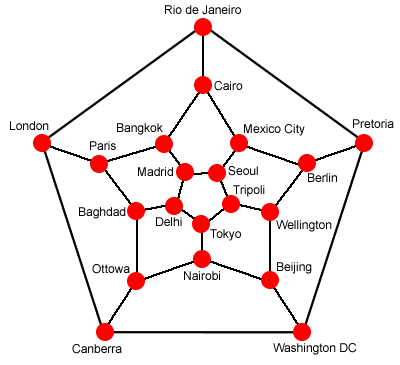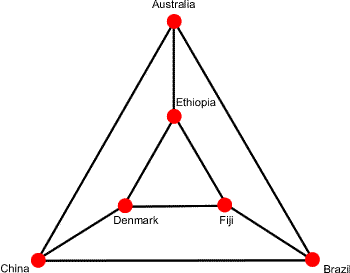Or search by topic
Number and algebra
Geometry and measure
Probability and statistics
Working mathematically
Advanced mathematics
For younger learners
Hamilton's Puzzle



- Problem
- Getting Started
- Student Solutions
- Teachers' Resources
Hamilton's Puzzle
In 1859, the Irish mathematician Sir William Rowan Hamilton devised a puzzle with a regular dodecahedron made of wood. Here is a dodecahedron:

He labelled each of the vertices with the name of an important city. The challenge was to find a route along the edges of the dodecahedron which visited every city exactly once and returned to the start.
Here is a graph which represents the dodecahedron. Can you see how each of the 20 vertices, 30 edges and 12 pentagonal faces is represented in the graph?

I start my journey in Rio de Janeiro and visit all the cities as Hamilton described, passing through Canberra before Madrid, and then returning to Rio. What route could I have taken?
Can you find any other ways of making this journey?
Here is a simpler network of countries:

How many different ways are there of visiting each of these countries once and only once, beginning and ending at Australia?
Why do this problem?
Possible approach
Key questions
Possible extension
Possible support
You may also like
Redblue
Investigate the number of paths you can take from one vertex to another in these 3D shapes. Is it possible to take an odd number and an even number of paths to the same vertex?
Networks and Nodes
Without taking your pencil off the paper or going over a line or passing through one of the points twice, can you follow each of the networks?
Sprouts Explained
This article invites you to get familiar with a strategic game called "sprouts". The game is simple enough for younger children to understand, and has also provided experienced mathematicians with significant food for thought.

